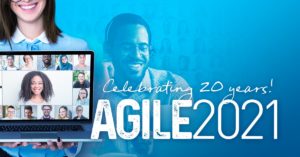Sensemaking is a form of distributed ethnography where people share stories and add layers of meaning by answering questions about their experience. Unlike other research methods, this approach directly links quantitative data to qualitative experiences. The narrative-based approach is particularly powerful in situations that are dynamic, complex, uncertain, and ambiguous.
While there are several variations of sensemaking methods, this experience report is based on a version adopted from David Snowden (Cognitive Edge). The method bridges the gap between qualitative data (e.g. case-studies, focus group interviews, narratives, ‘watercooler’ chats, rumors) and quantitative data (e.g. large sample surveys, organizational health questionnaires) by linking stories with answers to questions provided by the participants. The combination of stories and question metadata provides a nuanced and holistic perspective that enables leadership teams to identify emergent patterns and trends in behaviors and perceptions. The approach greatly reduces researcher bias because the participant codifies their own experience instead of a research team or natural language processing algorithm. The technique can be used to capture a large number of stories in order to understand emergent patterns and detect troubling weak signals across a large population. After interesting patterns are identified, the stories provide context that inform action plans and interventions.
This paper will focus on the lessons learned from using sensemaking methods to capture user requirements , sensing impediments to Agile adoption, and understand employee engagement (e.g. intrinsic motivation) and retention (i.e. keeping talented people from leaving). The paper will introduce readers to the sensemaking methodology and will also serve as a case study for others interested in using the approach to sense and effect change within a complex adaptive human system.



